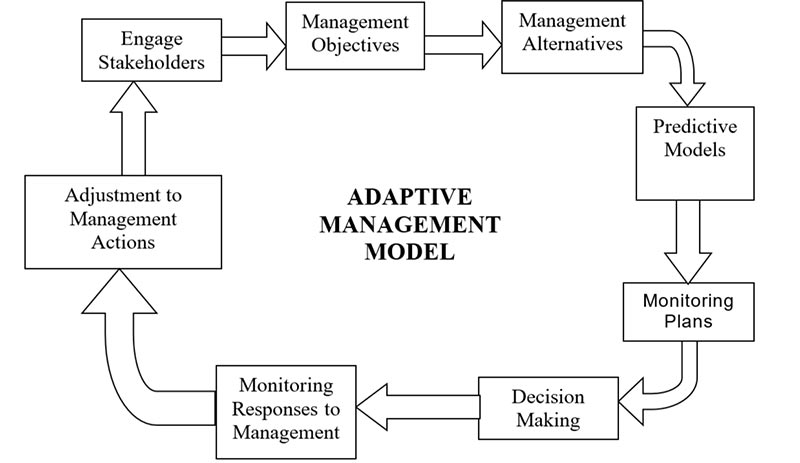Adaptive management (Appendix D - Adaptive Management) is the essential and continual process of learning from our experiences and managing based on what we have learned. An activity plan must include a management program and a monitoring program needed to keep management on track, test assumptions, provide the information needed for future planning, and guide rangeland managers (Williams et al. 2009) and adaptive management (Williams and Brown 2012). Adaptive management depends on flexibility and repeated iterations. Management plans and monitoring methods flow from objectives. Cooperative monitoring (Appendix A - Cooperative Monitoring) builds on the same principles as cooperative and adaptive management. People who depend on public land must take particular interest in monitoring. It is the responsibility of the managing agency and landowner to analyze and modify the plan as needed as new information is gathered through monitoring.
Monitoring methods are selected to determine whether progress is being made toward achieving objectives. Also, monitoring helps to determine why or why not progress is being made toward objectives. Objectives may focus management and monitoring on new questions, types of data and/or interpretations. Because one change leads to another, monitoring methods used through time in the same way and at the same location gain value and develop added significance. Keeping existing data, and periodically reanalyzing and interpreting all data using established methods and plots, is extremely valuable for developing an understanding for rangeland management.
Once the monitoring data are collected, they must be analyzed along with other useful data and information. Analysis includes organizing, summarizing, analyzing and evaluating the validity and utility of information. Because it is often preferable in planning and monitoring to use a collaborative approach, analysis of monitoring data should also be collaborative. This is especially true if different people collect different parts of the whole data set. For example, if the permittee collects short-term monitoring data and agencies collect long-term data, collaborative analysis increases and shares understanding. The permittee should be included in discussions and development of conclusions to better understand management practices and conditions for particular sites and seasons of use. Conclusions about progress toward objectives and causes of meeting or not meeting the objectives are both essential and must be thoroughly reasoned based on all available information. For application to public lands, the rationale for management changes (or not) must be documented.
The conclusions lead to a decision. To generalize, there are three possible decisions; continue existing management, change management or change objectives. The first two choices are fairly self-explanatory. The third choice, change objectives, would be made when the information, analysis and conclusions indicated that the objectives were not achievable, or the objectives did not actually relate to or were poor indicators of the identified issues, or the desired future conditions. Changing objectives is also appropriate when new planning sets new strategies for new goals. For example, grazing intensity and duration may be increased in order to reduce fuel loads of invasive annual grasses as a tool to meet an objective for vegetation structure on a fuel break.
 Figure 12. Adaptive management requires using long-term monitoring to evaluate progress toward objectives and short-term monitoring to understand what management has been implemented.
Figure 12. Adaptive management requires using long-term monitoring to evaluate progress toward objectives and short-term monitoring to understand what management has been implemented.


